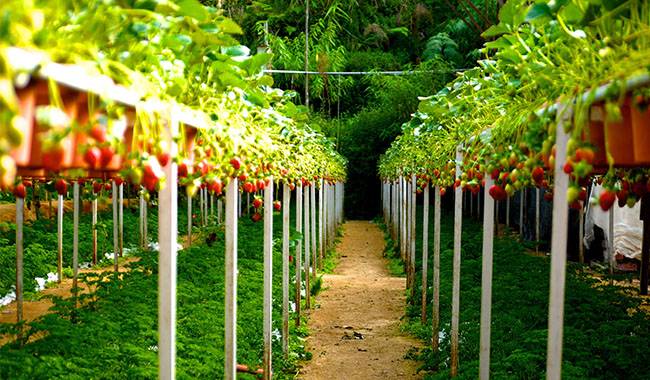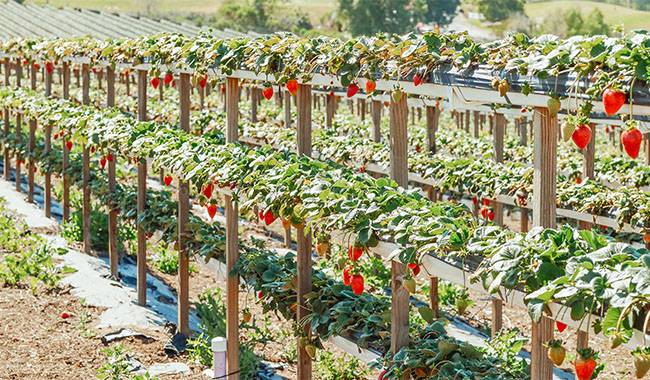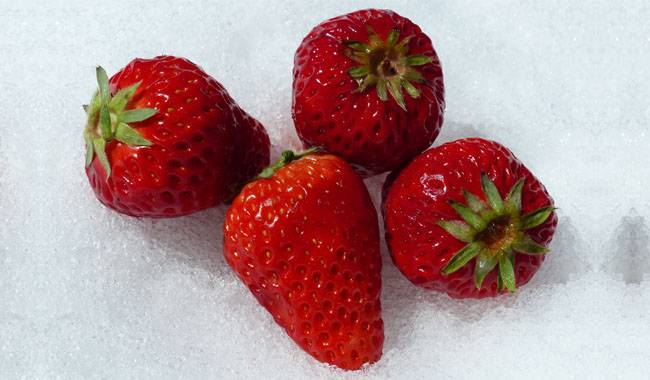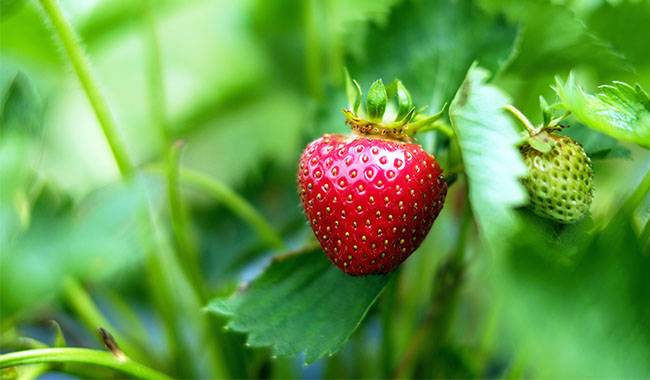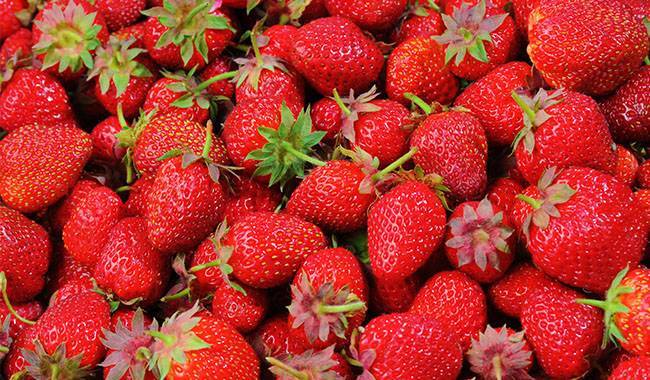
Even if each garden has a small garden strawberry bed, also need to hard working to achieve a large strawberry harvest. Yes, it gives a small berry, but they grow without “chemistry”. And it is wonderful! But why do we agree with this idea? Because we don’t fully understand this crop.
We can’t explain the agronomic practices recommended for it by unknowing its origin. So ignore them or consider them unimportant. But if we go back and understand the “parents” of the garden strawberry, many things become clear. And look back, not too far, just a few hundred years, because the garden strawberry is a very young crop.
THE HISTORY OF THE GARDEN STRAWBERRY
The history of the strawberry, or what we used to call the garden strawberry (Scientific name: Fragaria ananassa) began in the sixteenth century when the French officer Fleursil brought several bunches of small female strawberry chile from South America. Unable to pollinate without a male plant, she stayed in the botanical garden for more than 150 years, enjoying only her flowers.
Until 1766, when it was accidentally pollinated by another variety, the virgin strawberry. Thus, for the first time in history, large berries appeared on strawberries. It was the beginning of a new crop!
Why a beginning? Because the garden strawberry as we know it today was the result of tri-crossing, but at that time it was only double-crossing. In addition, we consolidated the results obtained by crossing with other European strawberry varieties, and thanks to these efforts we have modern varieties of these plants.
One of the first real garden strawberry varieties was the “Victoria” variety, obtained in England. It was he who first came to the United States.
Growing multiple varieties of strawberries
Why do strawberries need more than one variety for good pollination? The strawberry itself has the genetics of the Virgin and Chilean strawberry (with male and female plants) and is not perfect in the matter of self-pollination because it is already self-pollinating.
The best results it produces are obtained by cross-pollination between several cultivars. And the greater the number, the better the results (i.e. when growing in a collection).
It is possible to give one or two of your favorite varieties a larger percentage of allotment plots. The rest – at least one or two, or even as many as ninety varieties with different maturity stages (to prolong the fruiting) – can be planted on the periphery for better pollination.
Different varieties can often be distinguished by the timing of fruiting, the color of the petals on the flowers, and the structure of the leaves. However, the most reliable method is to spatially distance the varieties at planting and label them, recording the information in a garden diary.
Growing strawberries in upland areas
It is no coincidence that the modern strawberry, whose main large-fruitiness gene was inherited from the Chilean strawberry, has a second name – “coastal strawberry”. They are commonly found along the Pacific coast, in the foothills and mountains.
This explains the strawberry’s love.
- Humid air (it grows best in England, southern Spain, and Italy)
- high altitude (mountain ridges)
- Abundant water (but no standing water)
- Good permeability of the soil.
Choose a planting method that gives preference to planting on shafts. This eliminates water retention, which is important in areas with prolonged rainfall and provides better air permeability in the root zone of the plant.
Plant strawberries in single or double rows
More berries and bigger give those strawberry bushes that grow at the edge of the bed or away from other plants. Therefore, on farms you can often see strawberries grown in single rows – it provides the best conditions for the crop’s nutrition and yield. Or a double row.
In the latter case, the plants in both rows are on the edge, which also has a positive effect on the increased yield and quality of the crop.
To ensure that the strawberry bushes have enough nutrients, they should be planted at a certain distance. Of course, you can harvest berries by planting uniformly, but only sparsely planted will give good results and will not produce more berries for the same area.
However, the berries will be smaller and more difficult to pick, so the result will be no “bumper crop” title. In reality, a “bumper crop” is a large number of berries.
Depending on the maturity and potential of the strawberry variety, it is recommended to plant shrubs in the bed at different distances. Thus, when planting in a single row, leave 12inch (30 cm) between seedlings and 23inch (60 cm) between rows – for early varieties. If the soil fertility is high – the plants will be bigger, in which case the distance can be increased by another 2inch (5 cm).
In the case of planting in two rows, for early maturing varieties this scheme applies. 12inch (30 cm) in the middle of the row and 16inch (40 cm) between the rows. For medium- and late-maturing varieties, 16inch (40 cm) between rows and 20inch (50 cm) between rows. And the larger the variety has clumps, the wider the step.
There is a technique of dense planting that allows harvesting the first year of increased yield. This is planting plants at a distance of 8inch (20 cm) from each other. However, after the berry harvest, such a bed should be thinned, because, in subsequent seasons, its productivity in such a format will decline.
Providing humid air
As a crop originating from plants in coastal areas, strawberries prefer humid air and therefore feel good in greenhouses and heated rooms. For arid areas (grassland regions), special drought-tolerant varieties have been developed so far.
For the same reason, it responds well to regular watering and can usually tolerate short periods of standing water, but does not like water stagnation.
This explains why it is recommended to remove the winter mulch from the strawberry bed early, immediately after a snowfall. Such a method will speed up the warming of the soil and thus allow for an earlier harvest.
But most importantly, the start of the plant growing season is shifted to earlier conditions and there is time to catch the time when the soil and air are in a more humid state, which also has a favorable effect on the harvest.
Free of weeds and unwanted beards
The beds should be regularly cleared of weeds and excess whiskers, which are much-needed competitors for water, nutrients, and light for the crop. And from old leaves. It is the old ones that have lost their green color. Often they have been damaged by some disease.
There are recommendations to remove the leaves completely after fruiting. But the garden strawberry bush is a plant that requires the process of photosynthesis for its full development, which is impossible without green leaves. Therefore, pruning of strawberry leaves is not reasonable and is considered an unscientific method of maintenance.
Good nutrition
From the origin of the crop, it is easy to understand – strawberries like fertile soil. If it is planted in a prepared bed – the first year, she has enough nutrients. But by the second year, fertilization is already needed.
Usually, two main ones are enough: during May when the culture raises flower stems, and after the harvest to strengthen the growth of leaves. The best natural fertilizers for garden strawberries are considered to be ashes, hummus, herbal teas, and humates.
Every three years: a new place for strawberries
Every three years, it is necessary not only to renew the strawberry bed but also to transplant it to another place. This is because the shrub develops its potential within three years and no longer gives a decent harvest.
In addition, the root secretions accumulate in the soil and depress the garden strawberry plants. After three years in this place, it is better to follow the rules of crop rotation and plant other crops.
Most strawberry gardens beard gives in the first year. It is this feature, which is also necessary for the renewal and reproduction of varieties.
Dear readers
This is not all the advice to increase the yield of strawberries in the garden. Important and the time of planting, and the composition of the soil, and the predecessor plants, and the choice of varieties, and the distance of certain plants.
However, this is the minimum to get a good crop. I hope that this article will help you to define those techniques of agronomic engineering that perhaps you have previously ignored because you did not understand their importance.




